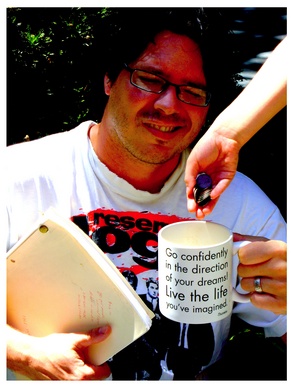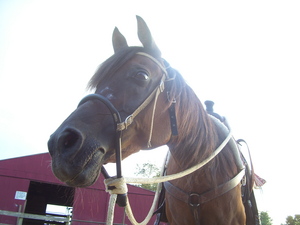Independent film, despite its gritty, frustrating, compromise-laden nature has always appealed to a certain stripe of writer. It’s the idea of pushing the boundaries of cinema. Writing free of studio ideals. Saying something important or new or just plain cool.
The irony, of course, is that in every form of screenwriting, there’s always a box that you can never completely step out of. And in independent film, there are plenty of boxes to get stuck in.
So when you embark on an independent film script, if you hold any hope at all of making it successful, you’ll necessarily trade those studio constraints for a whole slew of others. And shrugging them off could keep your little opus from ever being filmed.
But still, even with a few rules, independent filmmaking is an often fun and sometimes noble endeavor. So here are some suggestions (not rules) to help you get your indie script off the page and in front of a camera.
1. Figure out your budget range.
There are three kinds of independent films. The self-financed ones — ranging from ultra-low budget (Clerks, El Mariachi) to stuff that looks pretty slick (Napoleon Dynamite). Independent production-company-based — ranging from straight-to-video schlock (Troma Entertainment) to arthouse/festival fare (Reservoir Dogs, Donnie Darko, The Squid and the Whale). And studio arthouse pictures (Juno, Sideways, Little Miss Sunshine) with budgets ranging anywhere from $3 million to $30 million.
What kind of independent film do you wish to write? Most likely, it’s the first or second kind. Getting a studio arthouse script sold and green-lit is every bit as difficult as selling a big-budget studio spec.
So, for our purposes, let’s focus on how to write the kind of script you can either shoot yourself or draw the interest of a small non-studio production company.
If you are writing to attract a company, consider a budget range of about $500,000 to $2 million and then aim your script directly in the middle. With everything you write, ask yourself, “Can this be shot for $1.25 million?” “Reservoir Dogs” is an example of a script shot for roughly that price. Granted that was the budget for a film made 17 years ago. But prices for what you get in the independent film world have remained amazingly static since the start of the indie revolution of the late 1980s/early 1990s. In fact, with digital technology being what it is today, you might argue that a better film could be made in 2008 for $1 million than could be made for the same price 15 to 20 years ago.
But still, script-wise, “Reservoir Dogs” remains an excellent template for what you can and can’t do while working through an independent production company.
If you are writing something to raise the money for and shoot yourself, then consider a budget range of about $50,000 to $300,000. And again, aim for the middle — $175,000. “Once”, the 2007 sleeper hit by John Carney, was made for roughly $175,000 and it, too, is a great template for the kind of film you can shoot for this much money.
Notice the differences between these two films. “Reservoir Dogs” was shot on film and had more intricate setups and camera work and included a cast with known actors (albeit ones who’d agreed to take extensive pay cuts). “Once” was shot digitally, featured a lot of guerilla-style, no-setup camera work and used unknown actors. Both films are stories well-told and riveting (in their own ways), but “Reservoir Dogs” is a palpably more ambitious production than “Once”. And yet, both films seem positively primitive production-wise when compared to the average $50 million romantic comedy put out by the major studios.
So whether writing for self-finance or for a small production company, many of the key elements will be the same when compared to big-budget, studio specs.
2. Keep characters to a minimum.
If you check the cast list on IMDB for the 2008 Sarah Jessica Parker film “Sex and the City”, you will see the names of 77 different actors and actresses. If you do the same for “Reservoir Dogs”, you will find 25 names listed. For “Once”, you will see 35 names.
Most of the characters for all three films are bit players or prominent nonspeaking extras. You could essentially call “Reservoir Dogs” an 8-character “play” with 17 bit-players and extras. “Once” is more of a two-character cinema-verite-esque drama with nearly three dozen incidental players. But among the 77 characters listed for “Sex and the City”, 26 of them have actual names instead of Doorman #1 or County Sheriff #3. That’s one more “name” character than the entire cast of “Reservoir Dogs”.
I picked “Sex and the City” for comparison because I consider it to be a studio picture that is average in scope. It’s not a huge “Pearl Harbor” type epic (with 160 credited actors), nor is it a quiet, “talking movie. And yet, look at the way its cast list dwarfs the two indie-film examples.
Studio pictures have the luxury of fulfilling every casting whim that a writer tosses over the creative transom because the money is available to do so. Small production companies and independent financiers are not in that position.
It is amazing how often I’ve been given an indie screenplay to critique in which as many as 30 speaking parts meander in and out of 120 pages. (Maybe I shouldn’t be totally surprised. My very first screenplay was the same way.) I tell those writers that they’ve given their project about 25 unnecessary chances to really louse things up. Two elements ruin independent films faster than anything else — bad dialogue and bad acting. When you are working with limited funds, casting a large ensemble of solid actors is a near impossible task. So as the writer, you need to mitigate that task as much as you can.
If you are writing a script intended to draw a production company, try to keep the number of prominent speaking parts to twelve or fewer. (Prominent means anything more than three or four lines or present for more than two or three pages.) This will show any production company considering your script that you are aware of the constraints they are up against and they will be more likely to want to work with you.
If you plan to finance your own film, shoot for between four and eight prominent roles. This may sound extremely limiting, but finding creative and artistic solutions on the page is much easier than listening to your dialogue butchered in a horrible, misguided performance.
Now, there can be exceptions, of course. Maybe you have access to dozens of extremely talented actors who will work for free. And maybe you’ve already cast all the roles in your head and you’re confident everybody can pull off what you’re writing for them. Excellent! Have a fantastic time on the set.
On the other hand, if you don’t know gobs of talented actors, then find yourself a story to tell with just eight or fewer prominent characters. Given enough time, eight is a manageable number of good actors to pin down who will work for free (or next to it). By the end of casting, you (or the director or producer) will thank yourself for not making it more work than you had to.
3. Keep sets to a minimum.
The idea here is simple, really. The more locations and/or sets you’ve written into your script, the more camera set-ups you’re going to have which means the fewer total shots you’ll nail on any given day, which means more production days, which means more crew hours (and maybe cast hours) to pay, more equipment rental fees, more catering costs, etc. In short, the more sets and locations you have, the more expensive your film will be. And if you’re working with a set budget, that means having to cut costs elsewhere — like in post. Which is never a good thing.
Lets look at the sets and locations of our two indie film examples, shall we?
Reservoir Dogs” spent a full 60 minutes of its 100-minute running time in one place — the warehouse. The other 40 minutes were split between simple locations like a restaurant, a rooftop, a men’s room, an apartment and some others. Often this kind of one-set domination can make a film feel stuffy, almost claustrophobic. But by making his story nonlinear, Quentin Tarantino allowed viewers frequent breathers away from the warehouse in which he interlaced character backstory and showed the lead-up to the bungled crime. The result was a taught and gripping drama which played out, for the most part, in one room.
The film “Once” mostly used the streets of Dublin and a few simple interiors as its sets, which lent themselves spectacularly to the film’s hand-held, guerrilla-style cinematography. The overall effect harkens back to the relaxed methods used in French New Wave films such as “Breathless”.
The mobility of the camera in “Once” allowed for improvised setups and with just $175,000, it’s likely that Carney and his crew found themselves improvising with the locations throughout the shoot.
In my own independent film experience, I once had an unfixable radio broadcast intrusion into our audio receptors at the main location. We discovered this on the first day of shooting. But because I’d written a single-location-centric script, we were able to move the entire production from one end of Los Angeles to the other and commence filming with just half a day burned. We were then able to secure all the periphery locations within the new area with no trouble. But had I written multiple set locations of equal importance and secured them months in advance, a problem such as a broadcast incursion might have sunk the entire project.
So, in short, the fewer locations written into your script, the less budget strain you’ll find in actual production and the smaller your overall headaches will be.
4. Special f/x? What are you, crazy?
Actually, the inclusion of special f/x in independent film scripts isn’t so troublesome anymore thanks to the remarkable advances made in computer-generated imagery over the last 15 years. The 1997 short film “Troops” by Kevin Rubio showed what amazing things can be done with a small team of f/x specialists and some ingenuity. The “Star Wars” parody ushered in a wave of home-grown f/x wizards and it can take some credit for inspiring the internet-shorts revolution.
With ample funding, independent film legend, Robert Rodriguez, has essentially turned his Austin, Texas home into a digital f/x studio which he has used to create such uber f/x-filled movies as “Spy Kids”, “Shark Boy and Lava Girl” and “Sin City. Rodriguez proved you don’t have to be a billionaire filmmaker with a Marin County compound and a payroll of hundreds (if not thousands) to make an impact with digital f/x.
Technology and know-how are ever advancing, making f/x cheaper and better every day. The era of the “garage filmmaker” has truly arrived.
So no, you don’t have to be crazy to fill an independent film script full of special f/x. But I would still not recommend it. Just like with actors, if you want high-quality contributions made to your film, you’ll need to pay for it. Unless you know some college kid who is a CGI wunderkind who can pull off quality work “for his reel”, your best choice is to include special f/x only sparingly.
One exception might be if you are writing a comedy and want the f/x to look cheesy in a tongue-in-cheek sort of way. If that’s the case, then yeah, you can probably find someone who can do you some bad special f/x for cheap.
5. Keep it contemporary.
Which do you think costs more? A dazzling, authentic-looking, metal-plated conquistador costume? Or the t-shirt an actor wore to the audition?
That’s rhetorical.
Just like with everything else I’ve mentioned so far, choosing what era in which to set your script boils down to money. And your lack of it.
The very easiest thing to shoot is something that is set on the very day which it is shooting. Unlike with period pieces, a contemporary piece doesn’t necessarily require you to hunt down obscure props or contract a costume designer to produce for you the perfect, period-defining wardrobe. Instead, when a character in your of-the-moment script answers a cellphone, you can let the actor use his own. Viola! A prop issue solved instantly.
But if your heart is set on a particular era of the past, then go ahead and write it. However, the further back you go, especially past the 1970s, the more important it is you take these other suggestions to heart. You’ll need the wiggle room.
6. 100 pages or less.
There are several spec writing “rules” that annoy me and “page range” is one of those.
Four Screenwriting Tips That Annoy Me.
But this annoyance mostly applies to specs targeting studio sales. When writing something in the independent vein, you need to give your script a fighting chance of getting filmed. A two-hour film is a tall order for independent financiers and small production companies alike.
If you’ve told a great story in 120 pages, a production company may bite, but many times only if you agree to trim it down 15 to 20 pages. So why not save yourself the trouble and start off in the safety zone in the first place? An independent financier may be game to fund your two-hour opus, but the strain of such a heady production will likely show in the overall finished quality — if it manages to finish at all.
Bottom line — why are you making an independent film in the first place? To launch a career, right? Maybe you really do have a wonderful two-hour story to tell. Good. Put it in the filing cabinet. In the meantime, come up with a damn good 90-minute to 1-hour and 40-minute story. Put your talent for writing into a nicely-compacted creative crucible. Impress people with your wit and brevity. Leave them craving your next piece.
Many of today’s maverick filmmakers who are famous for large and lengthy productions took baby steps with their first outings. Tarantino’s first film “Reservoir Dogs” ran 100 minutes. Paul Thomas Anderson’s “Hard Eight” was 102 minutes. Steven Soderbergh’s “sex, lies and videotape” went 100 minutes. The Coen Brothers’ “Blood Simple” clocked in at 99 minutes.
Each of these filmmakers made quick-paced, highly-stylized first impressions. And they can all now do whatever projects they wish. So take if from them. Go short.
7. Know the history of independent film and what not to write.
Mentally tougher than Navy Seal training and more thankless than a Calcutta sewage dredger, the Hollywood script reader has the worst job in the world. If you think that’s hyperbole, just ask one.
Okay, that really is hyperbole. But I’ve never met a professional script reader who didn’t at least partially despise their work. And the reason? The stultifying nature of reading so many awful screenplays. And not just uniquely bad screenplays (that might be entertaining), but rather a small grouping of the same bad screenplays over and over again.
For independent film writing, the most hackneyed idea (and therefore, the worst) is the droll comedy detailing the exploits of aimless twenty-somethings who drone on endlessly about politics, philosophy and pop culture. If you have one of these scripts, burn it. Go to any film festival and you are likely to run across a few of these that actually made it to film. And the fact that they made it into a festival, suggests they are probably the very best of the type. And yet they are still unwatchable. So burn that aimiless, twenty-something slacker piece. It will otherwise be a complete waste of your time.
If your education of independent film is fairly complete, another trap a writer can fall into is being too derivative of one’s favorite films. Every artistic endeavor needs influence and inspiration. But those who forge a unique creative stamp often draw from sources many observers may not have guessed on their own. Woody Allen’s biggest influences, for example, are Groucho Marx and Ingmar Bergman. Groucho is understandable. Jewish, New Yorker, acerbic. Bergman’s films, on the other hand, can most delicately be described as grim. And yet, you can see the marriage of the two in Allen’s films. The hilarious neuroses of many of Allen’s characters — particularly the early ones played by himself — are comedic manifestations of an inner grimness that Allen and Bergman clearly share. Tarantino’s major influences are John Woo and Jean Luc Godard — two highly disparate directors. And yet, like Woody Allen, you can see the manifestation of a Woo-Godard lovechild within Tarantino’s cannon. Jackie Chan’s biggest influence? Not Bruce Lee, but Gene Kelly. And when you watch the grace and lyricalness with which Chan choreographs his martial arts scenes, the influence is clear.
If you don’t have an extensive independent film education, then here’s a good place to start:
IMDB’s Top Rated Independent Film Titles.
Netflix all the titles on this list that you haven’t seen. Watch them. Discover your favorites. Be influenced by them. Just don’t copy them.
8. Go genre.
Some of the most successful independent films in history have been genre films. Especially some of those in the horror and crime genres. Directors Sam Raimi and Tobe Hooper launched their careers with the bloody, low-budget chillers “The Evil Dead” and “The Texas Chainsaw Massacre” respectively. The Coens, Quentin Tarantino, Paul Thomas Anderson and Robert Rodriguez emerged from obscurity through the crime genre.
These types of movie can make money which, of course, is highly appealing to both investors and production companies. If you can write something fresh within these two genres and write it well, then you could see your script on the fast track to getting made.
On the other hand, if you don’t have anything fresh to add to the crime or horror front, then…
9. Don’t go genre.
Some of Hollywood’s top writer/directors made names for themselves with films that could have only been born through the independent film womb. “sex, lies and videotape” by Steven Soderbergh, “Citzen Ruth” by Alexander Payne, “Slingblade” by Billy Bob Thorton, “Bottle Rocket” by Wes Anderson (categorizable as a “crime” piece but, eh, not really), “The Virgin Suicides” by Sofia Coppola and “Napoleon Dynamite” by Jared Hess.
These are the kinds of intelligent and quirky stories that Hollywood has traditionally shied away from (except for a brief stint in the late 1960s and 1970s). But with the independent film explosion brought on by The Sundance Film Festival and Miramax in general and the smashing success of “Pulp Fiction” in particular, studios have begun to cash in by setting up their own arthouse divisions such as Fox Searchlight and Universal Pictures’ Focus Features.
If you have a burning desire to write an independent film, then it is likely the quirky, non-genre films are your chief influence. Learn what made these films successful and do your best to emulate them in your own unique way.
10. Tell a great story.
This may seem like a “no duh” tip, but so often writers of independent films get caught up in other things and forget to concentrate on their stories. They try to up the wit-factor with laboriously crafted “clever” dialogue. They try to crank their character’s eccentricities to “11”. They play with the traditional story structure, thinking they’ll blow people’s minds in some fantastic fashion that isn’t just merely confusing.
Forget that stuff. Those are just gimmicks. Just because Tarantino told his stories nonlinearly or that Christopher Nolan wrote “Memento’s” action going backwards, doesn’t mean you need to strain yourself to twist a story that’s probably already best told in sequence anyway. “Pulp Fiction’s” and “Memento’s” stories necessitated the way they were told.
Also, hide your thesaurus. Too many times novice indie film writers fill their characters’ mouths with obscure, unnatural sounding language. Maybe these writes think such verbosity makes them seem smart. Well, all it really does is render their characters unbelievable and annoying. And nobody’s going to think you’re smart if they’d just as soon close their ears as listen to your dialogue.
So focus on telling a really good story. Once you’ve written it, get some feedback. Preferably from professional screenwriters. If you don’t know any, then find some amateur writers — either through a writer’s group in your city or by browsing writer forums online. Maybe you have some intelligent friends who can give it read. That’s fine, too. But don’t rely on nonwriters for top-notch feedback.
There are also consultation services which you can find. The cost for script critiques generally run from $200 to $500. I don’t recommend them, though. That’s a lot of money to spend for the same advice you can get free elsewhere (if you look hard enough).
In 15 years of screenwriting, I’ve never paid anyone for a critique, so I can’t offer any recommendations. But there are two sources I know of which offer fantastic feedback for cheap (and as a periphery benefit). The Bluecat Screenplay Competition costs $25 to enter and, in addition to offering a $10,000 top prize and exposure to the film industry, every single entry receives a full page of well thought-out notes. The Film Independent (FIND) Writers Workshop is another resource that gives critiques to every entry regardless of acceptance into the program. The application cost is $75. Between the two, you should be able to get all the professional feedback you will need to rewrite your script into a great story.
Bluecat Screenplay Competition.
Film Independent Writer’s Lab.
More screenwriting articles by Mark Albracht:
Four Screenwriting Tips That Annoy Me.
Tips on Writing a Horror Movie Script.
Five Tips for Getting Your Screenplay on Track.





